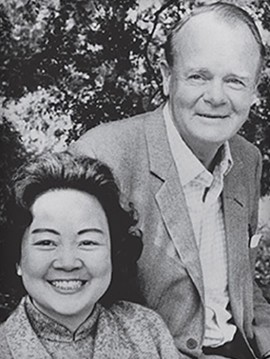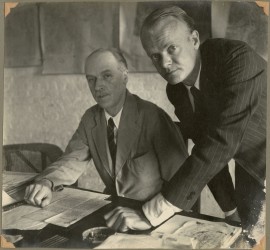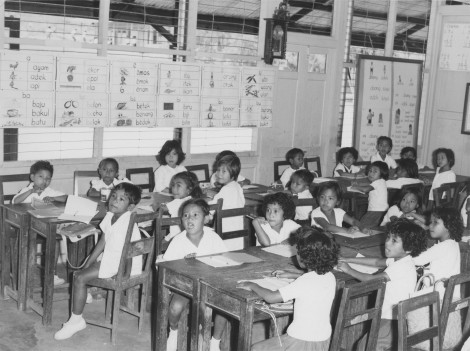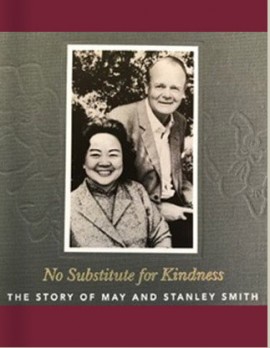“I do get some pleasure out of this ability to give, particularly to something where people are really slogging at it in the face of great adversity, to do some good in the world.”
Stanley and May Smith lived through difficult but fascinating times; both experienced hardships and witnessed violence and misery in China during World War II. Perhaps due in part to these experiences, throughout their adult lives, Stanley and May were concerned about matters beyond themselves and were dedicated to improving the welfare of others. The foundations established to steward their financial legacy reflect their interests, values, and generosity.
Born in 1907 in Australia to a middle-class family, Stanley Herbert Smith attended the Church of England Grammar School (Churchie) in Brisbane on a state scholarship. Formal education held little attraction for Stanley, and he left school at age 16 to work as a jackaroo – an Australian cowboy – in the Australian Outback. In 1933, he married his first wife, Olive May Williams. Their only child, Barbara Stanley Smith, was born in Sydney in 1936.
 May and Stanley Smith
May and Stanley Smith
In 1941, while working as an advertising manager for a leading Australian news agency, Stanley was recruited to serve in Singapore as an operative in a secret anti-Japanese propaganda and intelligence mission. From 1942 to 1945, he ran the British Ministry of Information’s propaganda campaign in China.
While stationed in the bombed-out, overcrowded wartime capital of Chungking (Chongqing) during the war, Stanley Smith met May Wong, a Chinese national who was working as an editorial assistant on the Ministry’s staff. May had been born in 1922 to a prosperous, well-connected family. She attended the Baldwin School for Girls, a Methodist missionary boarding school in Nanchang, and spent summers at her family’s vacation home in the luxurious mountain resort town of Kuling (Guling).
 Stanley Smith (right)
Stanley Smith (right)
In 1937, while May was at boarding school, the Japanese military began bombing raids on Nanchang, causing widespread destruction and panic. In 1938, at age 15, May enrolled at Ginling College, which had moved from its campus in Nanking (Nanjing) after the Japanese massacre, to the remote town of Chengtu (Chengdu). As a young student, far from home amid the horrors of war, May coped with scarce food supplies, overcrowding, disease epidemics, air raids, and devastating Japanese bombing attacks. May graduated from the college in 1942 at age 19 and made her way, mostly on foot, to Chungking, where her fluency in English helped her to quickly find employment
After the war, Stanley moved to Hong Kong, where he and his business partner, fellow Australian John A. T. Galvin, pursued a variety of lucrative joint business ventures and investment opportunities. Meanwhile, May left China in 1946 for Scotland, to spend a year studying at the University of St. Andrews.
In 1948, Stanley’s first wife, Olive, died of cancer while the couple were in the middle of a divorce. Two years later, Stanley and May were married. By then, war between the Nationalists and Communists had resumed, and May lost contact forever with everyone in her Chinese family.
Stanley and Galvin’s business enterprises culminated in their purchase of mining operations in what was then British Malaya (today’s West or Peninsular Malaysia). Their iron ore mining operations were highly profitable from the start, and Stanley and Galvin quickly became known as progressive employers who not only modernized equipment and processes and paid generous wages to the local population, but who also built schools for the children of employees and provided health care and other benefits.
 Malay school classroom
Malay school classroom
May and Stanley lived a low-key but sumptuous life made possible by the financial fortune that Stanley quickly earned through his share in the Malayan mining operations and other fruitful business enterprises. Generous and unassuming in their personal giving, the Smiths were an extremely private couple who preferred staying out of the spotlight and actively discouraged public recognition and attention. As Stanley once wrote:
“A man who succeeds in world commerce as I have is no fool and above all he pretty soon learns that his wealth is something lent to him during his life; he can’t take it with him!! It’s no virtue then to give it away.”
In his late 50s, Stanley Smith began stepping back from an active role in business. He spent his later years mostly at his and May’s home in Nassau in the Bahamas, pursuing his passion of cultivating orchids and other rare plant species. He was in the process of creating a foundation specifically to support horticultural projects and research throughout the world when he died suddenly at age 61, in 1968. Two years after his death, in 1970, May and Barbara established two horticultural trusts, one in the US and one in England, fulfilling Stanley’s vision. In 1977, May created the May & Stanley Smith Trust, which merged with the US horticultural trust in 2010. In 1989, May created the May and Stanley Smith Charitable Trust.
May survived Stanley by 38 years. She died in July 2006 in Nassau at age 83. Today, the trustees of the Smith Trusts honor and sustain the values evident in the Smiths’ lives and personal philanthropy, including humility and a belief in the dignity and potential of every individual.
The intriguing story of the Smiths is told in a full-length book entitled No Substitute for Kindness: The Story of May and Stanley Smith. The book, produced by Personal History Productions LLC and published in 2017 by the May and Stanley Smith Charitable Trust, is available as a free ebook below, and a hard cover version is for sale on Amazon.com or by contacting admin@smithct.org.
No Substitute for Kindness: The Story of May and Stanley Smith


